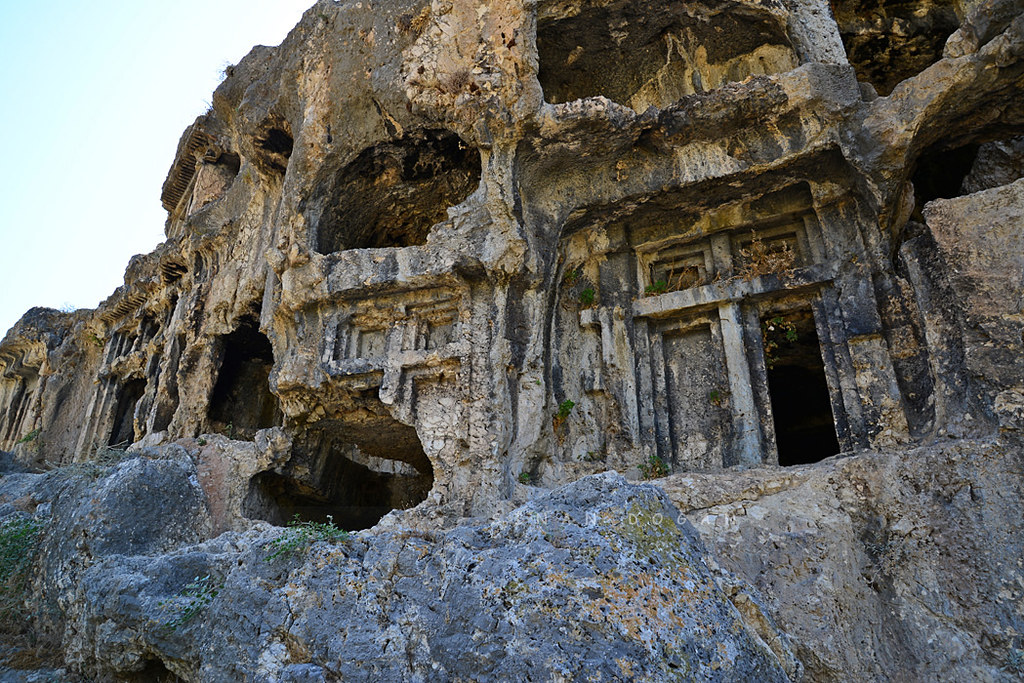The ancient writer Panyasis states that, except Kragos, Tlos, Pınara, Xanthos and Kragos are all children of Praxidike and Tremile, who are in the Xanthos Valley. Tlos, B.C. While it was mentioned as Dlawa in the lands of Lukka in the Hittite texts in the 14th century, it is the same place as the city, which was later referred to as Tlawa in Lycian inscriptions and Tlos in Greek texts, and its foundation dates back to B.C. It is accepted that it dates back to the 2nd millennium BC. Once near the city, the dominant position of the acropolis offers an impressive view.
The surroundings of the naturally sheltered acropolis hill have been fortified and reinforced with city walls in places. The early city walls and rock tombs in the northeast direction of the acropolis are typical examples of Lycian culture. The city walls are mostly located in the eastern and southeastern parts and were built during the Roman period; During the Byzantine period, many structures and even some sarcophagi were repaired using the materials of the tombs. The uppermost structures are Late Period structures built with spolia stones and contain the walls of a bey's settlement appointed during the Ottoman Empire. Tlos Ancient City.

The ruins mentioned above are interesting in that they simultaneously display the cultural phases of the acropolis hill in a narrow space. In the area supporting the carefully crafted Roman Period city walls on the eastern slope of the acropolis, there is a stadium with up to 12 rows of seats running parallel to the city walls. The building groups observed opposite the stadium belong to the Roman Period and although their functions cannot be clearly expressed today, they must belong to the agora and its sections. The ruins we see in the southern part of this area belong to gymnasium, palestra and bath structures. In the easternmost part of the site, there is a theater from the Roman Period built on vaulted galleries. The stage building of the single-diazoma theater survived until the third floor of the northern section. The Lycian inscription blocks in the northern paradox must have been used as spolia at the time it was expanded or repaired. To the south of the stadium, at a point overlooking the Xanthos valley, there is a three-storey bath structure built during the Roman period.
Tlos Ruins Entrance Fee
The entrance fee to the ancient city is 20 TL for 1 adult. Museum card holders can enter free of charge twice a year. Museum Card Plus holders have unlimited entry rights throughout the year. While you're at it.
While you're here to visit the Tlos Ruins
You can visit many historical places and museums around Fethiye. You can add more historical places and museums to visit in Muğla to your route by visiting the Mugla Museums page on our website.


 English
English Türkçe
Türkçe